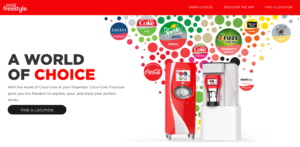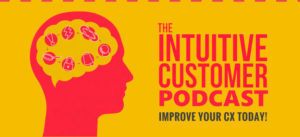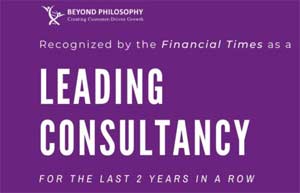If you give people the option to shop somewhere that only had a few choices or another venue with a wide selection, people almost always go for the larger selection. However, sorting through options can feel overwhelming.
Too many choices in your Customer Experience are a terrible thing. Of course, too little choice is not great either. We discussed the issues with too many options in a recent podcast and what you can do to make customer’s decisions easier in your Customer Experience.
I remember feeling overwhelmed by choices when we were working with a company in Moscow (when it was still under communist rule, mind you) similar to Best Buy with electrical equipment, audio, and the like. We were doing a Customer Mirror, where we were acting like we were customers, and I was going to buy a webcam.
However, when I went to the webcams, I couldn’t choose. Why? There were hundreds of the bloody things with every variation you could imagine. There was no way I could pick.
The Consequences of Too Many Choices
A couple of things happen when we get too much choice. Both drive negative consequences, at least from the perspective of the seller.
First, it reduces our motivation. One study ran an experiment with students in a psychology class where they could write a paper for extra credit. Some participants could choose from six different topics, and some could choose from 30 different subjects.
The researchers gave these papers to independent reviewers who graded all the papers and the students who only had six choices performed better than the students who had 30. Researchers attributed it to motivation. For the group with 30 choices, the act of choosing a topic taxed them to the point that they had no motivation to write the subsequent paper.
In other contexts, a lack of motivation can cause you to give up and not choose. So, you can walk away from the buying decision because you lose your motivation.
Second, it can change our reference point for satisfaction. The more options you have, the more second guessing you can do. More choices means more chances to make a mistake.
My wife Lorraine is notoriously slow making a decision about what she wants in a restaurant. Moreover, once her food arrives, she realizes she made the wrong choice. She second-guesses her choice as soon as she sees it—and what I ordered.
But Wait! There’s More
When you’re talking about these concepts, there’s never just one thing happening. Multiple things occur.
Bounded Rationality is making decisions within certain constraints. For example, if you love a brand, then you will pick from that brand even though other brands offer the same or a similar thing. An example is my relationship with Apple. When I need a new phone, I don’t shop around. I get the latest iPhone.
Menus are a form of Bounded Rationality. The restaurant offers these choices. Now, some have a lot to consider; The Cheesecake Factory Menu is so extensive, it practically has chapters. Obviously, it’s great to have so many options. However, it’s also overwhelming.
It can be torture for Lorraine to make a decision about her order at a restaurant when choosing from a sizeable menu. Lorraine wonders, “what if I had gotten this other thing instead?” Whereas if you took her someplace with two options, she might be delighted with what she chose once it arrived.
It’s also indecision. Lorraine would rather keep her options open; I’m decisive. I make quick decisions.
Another problem is you may not have all the data. If we walk into a choice situation, we have a hard time making decisions without enough information.
Lorraine never wants to make a decision on what to order without all the information. In other words, she doesn’t want to make a decision based on what’s printed on the menu; she wants to hear the specials first.
In my case with the webcam, I wanted the webcam I bought to be within a set of quality parameters. However, I didn’t have the data, meaning I didn’t know what the quality parameters were for webcams. I also did not have strong opinions about webcams. I neither knew how one was better than the other nor how they were different from each other.
In these cases where you don’t have all the data, the way that we inform ourselves is by looking through options. When there are many options and variation, the process gets complicated. With the webcams, it was this number of megapixels versus that, and this webcam has some kind of stabilization feature, but that one doesn’t. You start racking up more and more tradeoffs.
If you went into the webcam situation fully informed or if you had strong opinions, it would be easy. Having more choices meant you would find what you want. But if you don’t, you have to figure it out and making a decision becomes too difficult.
Extremeness Aversion is also at play here. In many of these situations where we are sorting through information, we tend to avoid the outermost edges of our choice spectrum, settling somewhere in the middle, or a compromise position. For example, we don’t pick the small or the large drink option at a fast food restaurant but instead choose the medium, regardless of details like price per ounce or even the number of ounces. It’s easier to settle on the medium and be done with it.
The same was true of the webcams. Although I didn’t end up choosing one, I was not even looking at the cheapest one or the most expensive one. It was all the hundreds of models in between that did me in and defeated my decision.
How Many Choices Are the Right Amount?
People like being able to make choices. They do not like having one option or only two options because that isn’t enough. If you give them too many, they aren’t happy either, because it’s too difficult to make a decision.
However, you can take action to make decision-making easy for your customer.
Choice architecture describes how to construct choice sets that still give people the freedom to choose, but points in some direction, or makes it easier for them.
In other words, have a lot of options but then make it easy for people to sort through them based on how you organize the process. The way you arrange your choice assortment can make a big difference.

Coca-Cola Freestyle is a machine where you can choose the soda or combination of drinks you want. The possible combinations on those machines run into the tens of thousands, but the touch-screen devices are friendly to use. They start off with four categories and then give you another menu with another set of options. Next, the screen moves you to the specifics within that category.
So, in just three steps you can get down to the soda you want out of thousands of options. They have reduced an assortment of tens of thousands down to three easy steps.
If we give our customers tools so that they can reorganize assortments themselves, it makes wide varieties seem like small assortments.
Online, you can present far more products. You can offer 50 million webcams if you want. However, it should be easy to filter by reviews, by price, by brand, or whatever distinction that you can provide customers.
Also, since we understand that extremeness aversion is at play in choices, we can create extremes that drive customers to choose a middle option we optimized for them to get the best of both worlds. The marketing message can feature that middle option, or in a brick and mortar location, it could be in a featured display case. On Amazon, these “middle” options are often highlighted with a banner that reads “most popular” or “best-seller.”
When it comes to how many choices you should offer, you shouldn’t necessarily listen to your customers. Your customers will always tell you they want more choice options. However, when push comes to shove, choices can be overwhelming to customers in many instances.
Also, multiple things happen that affect what people choose, from bounded rationality to extremeness aversion, and all the other details. Design for these influences in your experience.
Final advice, if you are shopping for a webcam in Moscow, stop yourself right now. These days, the webcam is built in, making that decision the easiest of all.
To hear more about Why Too Much Choice is a Bad Thing in more detail, listen to the complete podcast here.
If you want to benchmark your organization’s performance in the new world of behavioral economics against other companies, take our short questionnaire. Once you submit, we compare your answers against what we know about the market and send you a free personalized report about where your organization is today.
 Hear the rest of the conversation on “Why Too Much Choice is a Bad Thing” on The Intuitive Customer Podcast. These informative podcasts are designed to expand on the psychological ideas behind understanding customer behavior. To listen in, please click here.
Hear the rest of the conversation on “Why Too Much Choice is a Bad Thing” on The Intuitive Customer Podcast. These informative podcasts are designed to expand on the psychological ideas behind understanding customer behavior. To listen in, please click here.
 Colin Shaw is the founder and CEO of Beyond Philosophy, one of the world’s leading Customer experience consultancy & training organizations. Colin is an international author of six bestselling books and an engaging keynote speaker.
Colin Shaw is the founder and CEO of Beyond Philosophy, one of the world’s leading Customer experience consultancy & training organizations. Colin is an international author of six bestselling books and an engaging keynote speaker.
Follow Colin Shaw on Twitter @ColinShaw_CX
Sources:
Goodwin, Bryan. “Research Says…/Choice Is a Matter of Degree.” www.ascd.org. Web. 29 March 2019. < http://www.ascd.org/publications/educational-leadership/sept10/vol68/num01/Choice-Is-a-Matter-of-Degree.aspx>.


